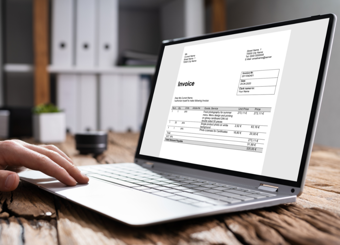AP best practices for E-commerce stores
With B2B e-commerce in the U.S. on track to hit $1.2 trillion by 2021, according to Forrester, it’s crucial for B2B merchants to accelerate their moves toward digital transformation. How can e-commerce companies adapt their organization and internal business processes to cope with, and benefit from, this massive growth? Accounts payable automation is the answer.
E-commerce is all about speed. The end customer, whether it’s a B2B or B2C transaction, expects a smooth and swift buying process, easy payment and fast delivery of the goods ordered. Also, a recent Google report states that nearly half of B2B online buyers are millennials, representing the market of the future and adapting a shopping behavior that is of no need of human interaction but expecting intuitive, self-service interfaces and 24/7 availability.
It is crucial for e-commerce businesses who want to compete in this industry that every internal process can deliver on these customer expectations of a fast and smooth experience, accounts payable and invoice processing included.
Going digital means going global
An e-commerce business is by definition international. Anyone who accesses the internet is a potential customer, so it is critical that the company can cope with the challenges of buying and selling cross borders.
For AP this means they need to be able to handle vendor invoices from abroad as well as coding of international taxes, VAT and potential fees occurring in cross-border trade. It’s important that the AP team sync up with other key functions within the company, including Accounting and Treasury, to ensure the management of foreign exchange and local taxes according to organizational and regulatory standards.
It’s all about the cash flow
The structural and organizational speed of the e-commerce industry can also bring cash flow challenges for e-merchants. In this fast transactional environment goods needs to be delivered quickly, sometimes before reconciliation of the payment. Hence, it’s crucial to stay on top of the company’s cash flow.
Accounts payable can play a critical role in the cash flow visibility to support reporting and forecasting. Aggregated data on outstanding vendor invoices received but not yet posted in the ERP system is usually available as ready-to-use reports in the accounts payable automation solution, providing critical insights on the cash flow state to the CFO and Finance team.
How AP support e-commerce businesses growth
There are a few tactics that the AP team can apply to ensure internal processes are set up in a way that helps the business stay on top of speed and cash flow.
Streamline invoice receipt and data capture
With an invoice scanning and data capture tool AP teams can get full control of incoming invoices, with a digital, centralize invoice data repository. And by removing the paper in the invoice process, there will be fewer errors and late vendor payments due to lost invoices or invoices stuck in people’s inboxes
Use technology to automate the invoice processing workflow
AP teams who implement a modern AP automation solution will experience faster and smoother invoice processing where the system automatically manages many steps. And a quick process will ensure suppliers are paid on time, securing the supply chain and speedy delivery to the end customers.
Apply advanced invoice matching to maximize the level of touchless invoice processing
An advanced invoice matching engine can match invoices to purchase orders on different data levels, such as invoice header, row or line item. For e-commerce businesses dealing with numerous product lines and types, this will help process those PO-based invoices swiftly and accurately without time-consuming manual checking.
Drive more pre-approved spend with purchase orders
It is recommended to implement a pre-approval purchase process even for indirect spend to ensure the invoice can be matched to a purchase order at arrival and manage it in a fully automated touchless process
Control the data in the AP process to support cash flow reporting and forecasting
Use the data that sits in the accounts payable automation solution to pull reports on outstanding vendor invoices. This way, the finance team can easily get visibility into the cash flow status and ensure accurate reporting and forecasting.






